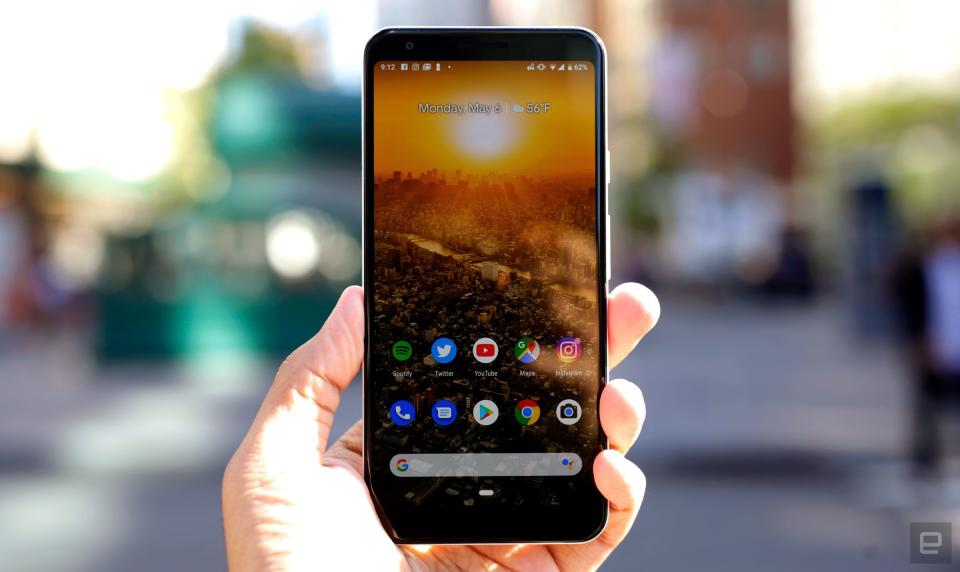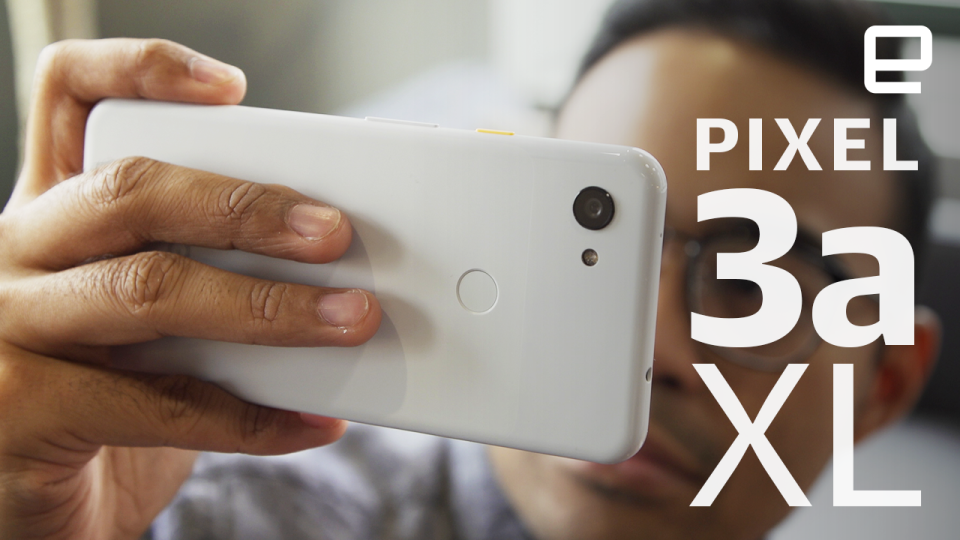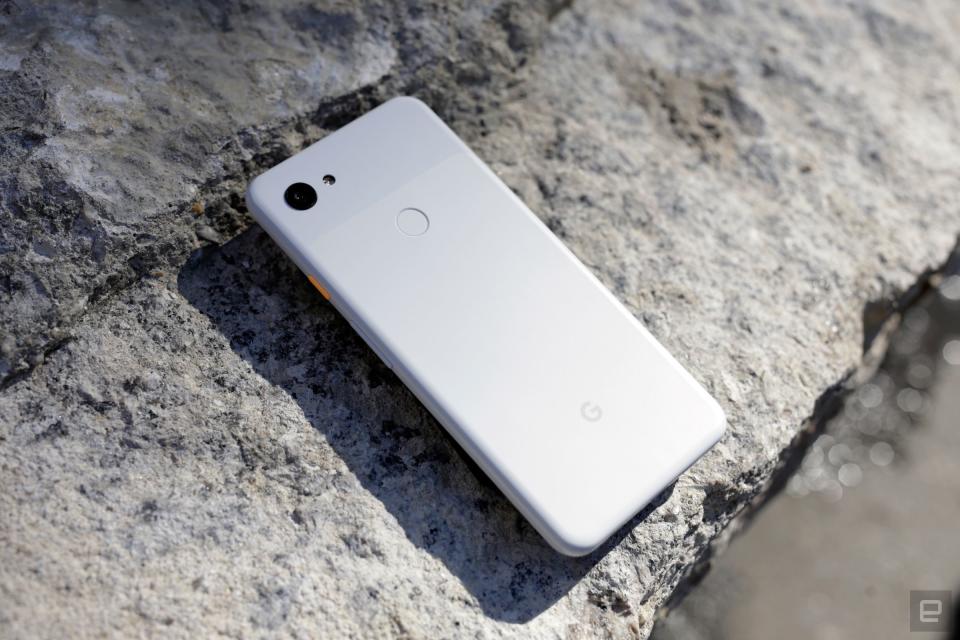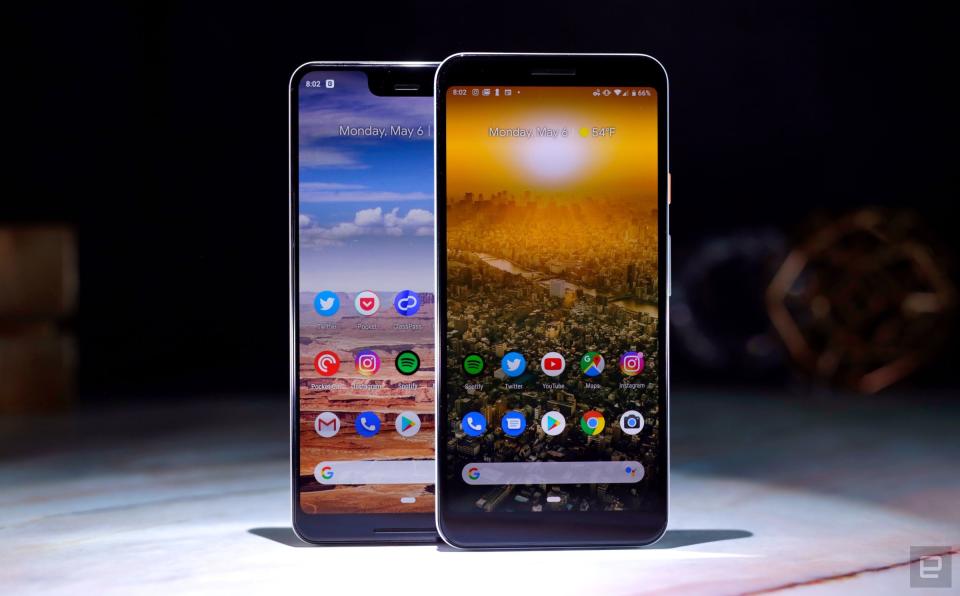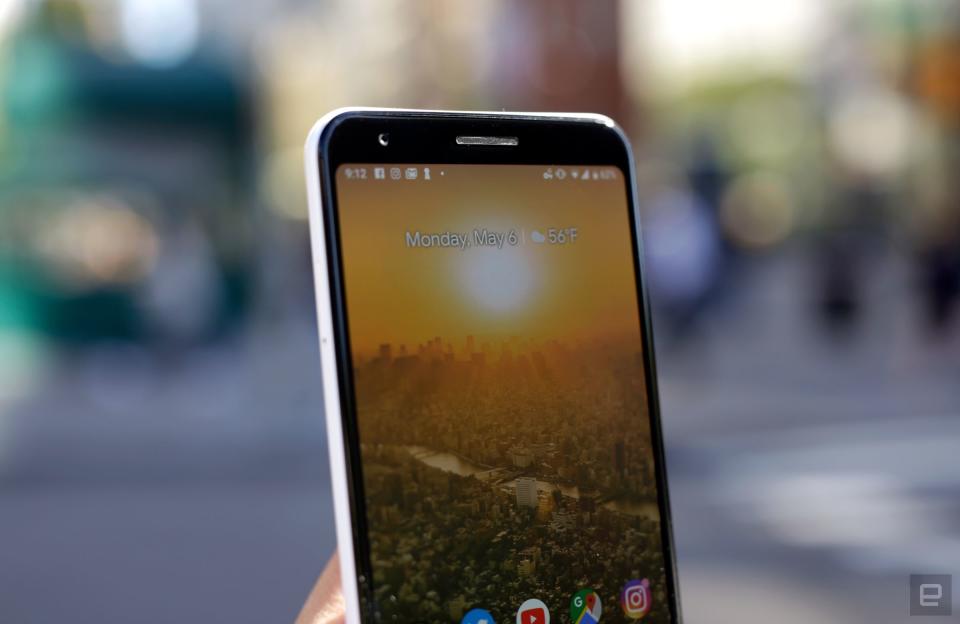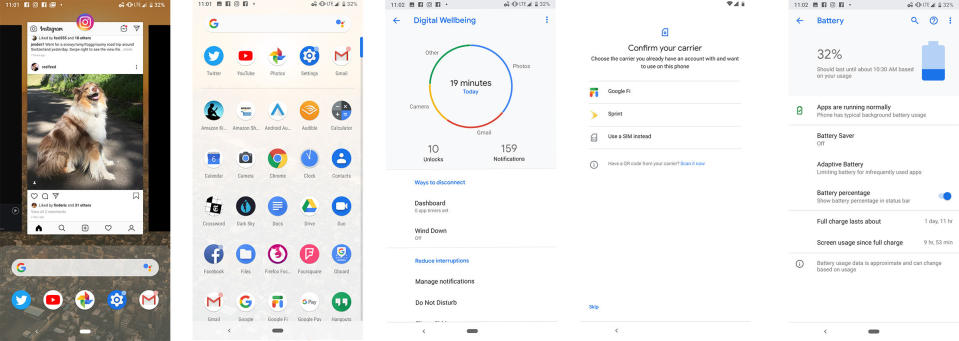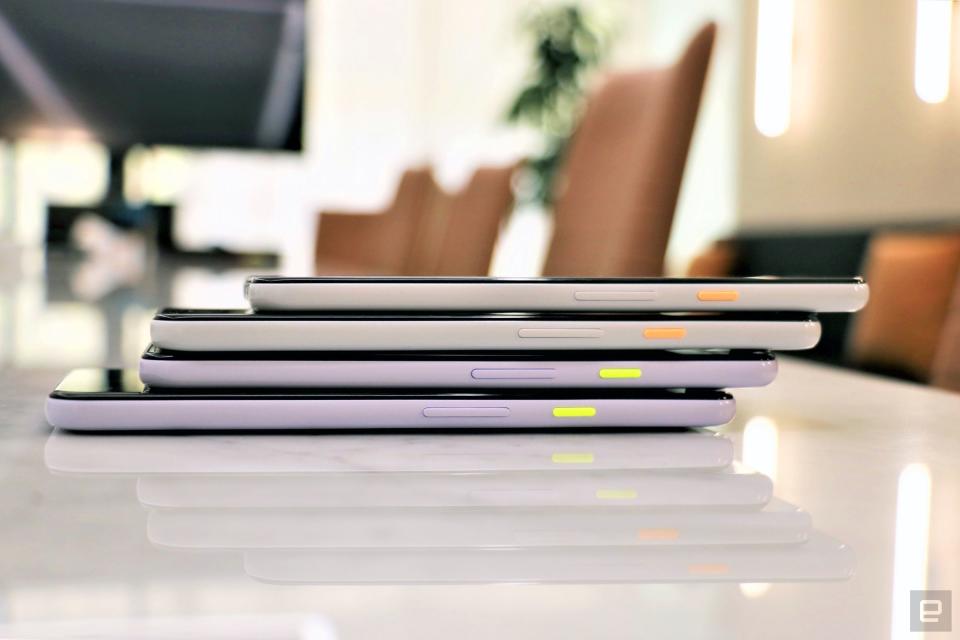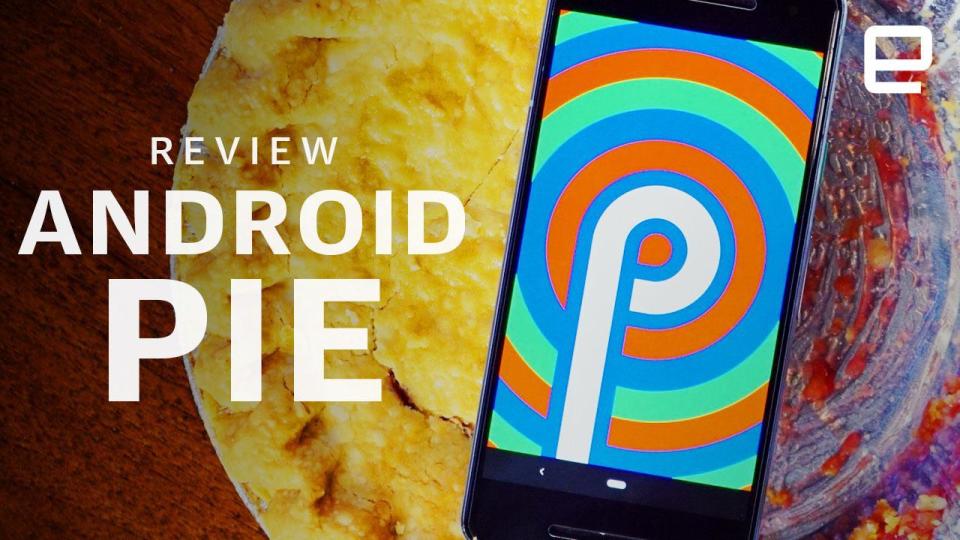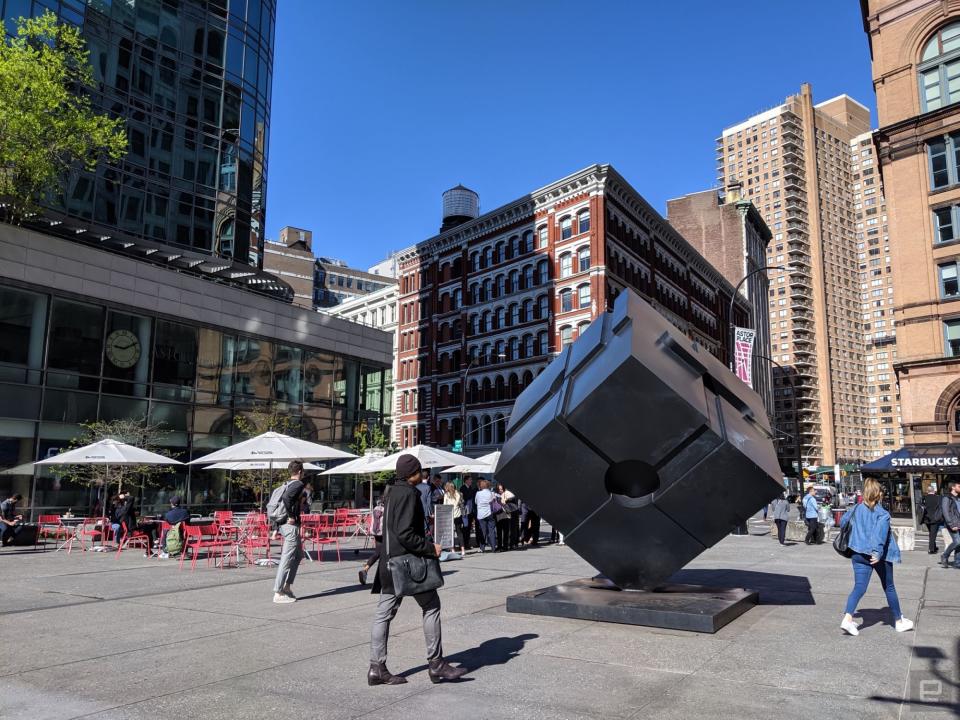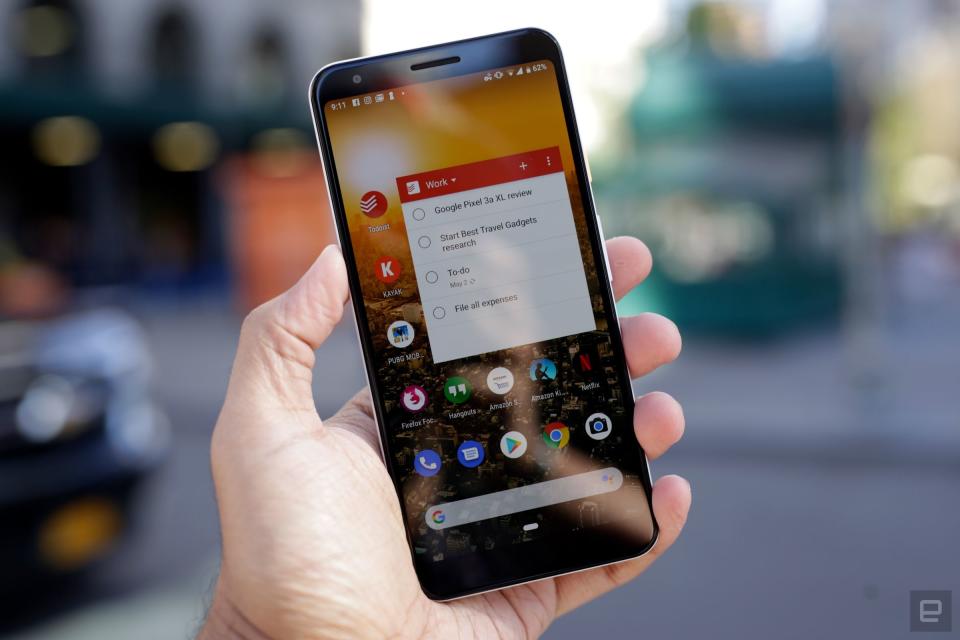Pixel 3a XL review: Google's triumphant return to affordable phones
The search giant's best phone just might be its cheapest.
From the moment Google's Pixel 3 and 3 XL went on sale, us reviewers were largely in agreement: The phones' software was far more impressive than the hardware. Fair enough; Google is still pretty new at this "making its own devices" thing. But somewhere along the way, things took a turn. Shortly after launch, we started hearing about a litany of issues plaguing those Pixels, from increasingly sluggish performance to worrying battery life to camera-stability problems. It's not clear whether any of these failings specifically led to the disappointing sales Alphabet spelled out in the company's most recent earnings call, but they surely didn't help.
So, what does a company like Google do when its flashy, premium smartphones aren't doing so well? In this case, the answer wasn't "launch some new flagships so everyone forgets about the last ones." Instead, Google decided to take the fundamentals of the Pixel experience and squeeze them into two new, affordable spinoffs: the $400 Pixel 3a and $480 3a XL.
I know what some of you are thinking: Taking a phone with a shaky track record like the Pixel 3 has and stripping it down to its bare bones could be problematic. And on paper at least, it doesn't seem like the Pixel 3as should be all that interesting; they're cheaper versions of devices we've already seen, designed to appeal to people who don't want to drop $750 on a smartphone. After testing the Pixel 3a XL for a week, though, I'm starting to think Google might be onto something here. Yes, it's more limited in some ways, but those limitations never, ever felt like dealbreakers. If nothing else, the 3a XL is a surprisingly capable take on the Pixel formula that, in some ways, proves to be more valuable than either of the models that came before it.
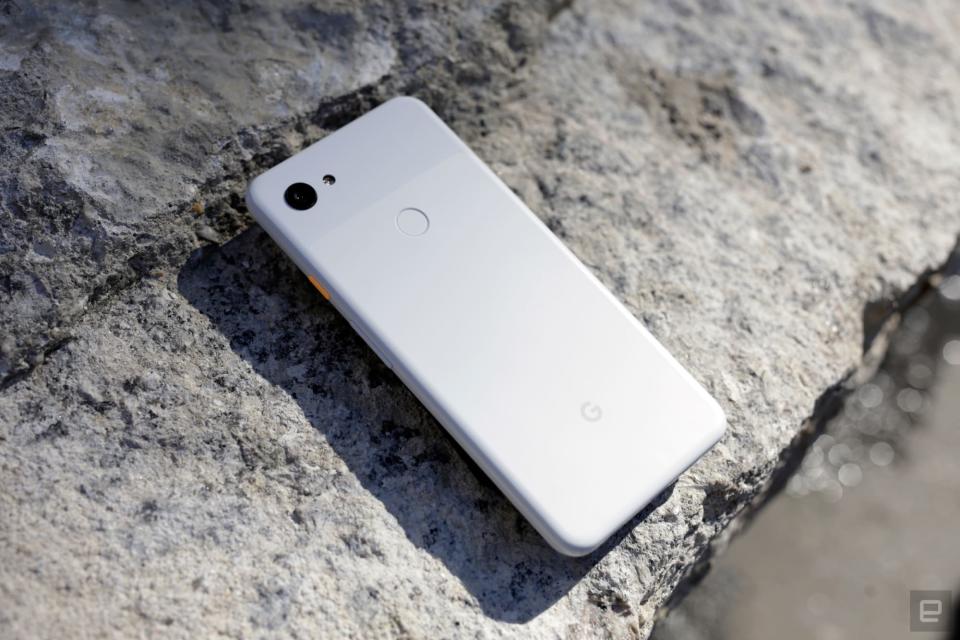
Building a great budget-friendly phone is all about finding the right balance of trade-offs and capability. With the 3a XL, Google managed an especially rare feat: None of the compromises it made in producing this cheap Pixel actually feel like compromises. For one, Google did a pretty remarkable job making the 3a XL look and feel a lot like its more expensive sibling. The glossy-and-matte finish around back is here once again, not to mention the telltale Pixel Imprint fingerprint sensor and the little pop of color on the power button. It's ever-so-slightly taller than the standard Pixel 3 XL, but it otherwise feels identical.
That's especially impressive when you consider that Google saved some money on these bodies: Instead of another glass-and-metal chassis, the Pixel 3a XL is made entirely from sturdy polycarbonate. This plastic frame doesn't have the same panache as the original Pixel 3s did, but hey — Google needed to keep costs down somehow.
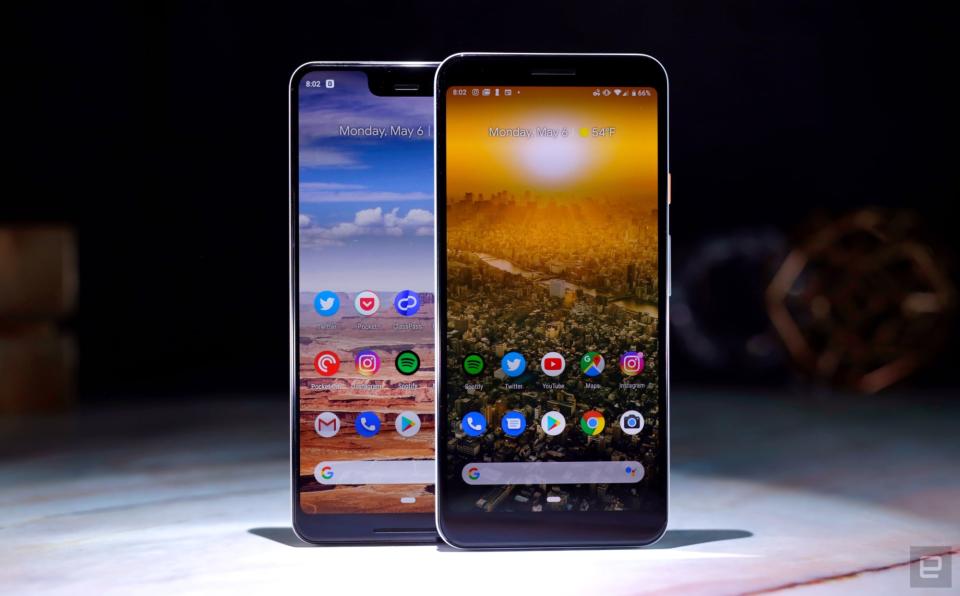
The differences become more apparent once you flip the phone over. Look closely and you'll notice one less camera up front (more on that later), while the second speaker and microphone have been moved to the 3a XL's bottom edge. Don't worry: It's still loud enough for podcasts and YouTube videos, though you lose the kind of immersive audio quality that came with the regular Pixel 3's dual front-facing speakers.
Thankfully, both versions of the Pixel 3a have standard headphone jacks so you can plug in your favorite pair of cans without having to remember where you left that obnoxious little converter dongle. (I was half-hoping that, since Google was clearly open to embracing classic smartphone features, we'd get some expandable memory support here. Nope! You're stuck with 64GB no matter what.)
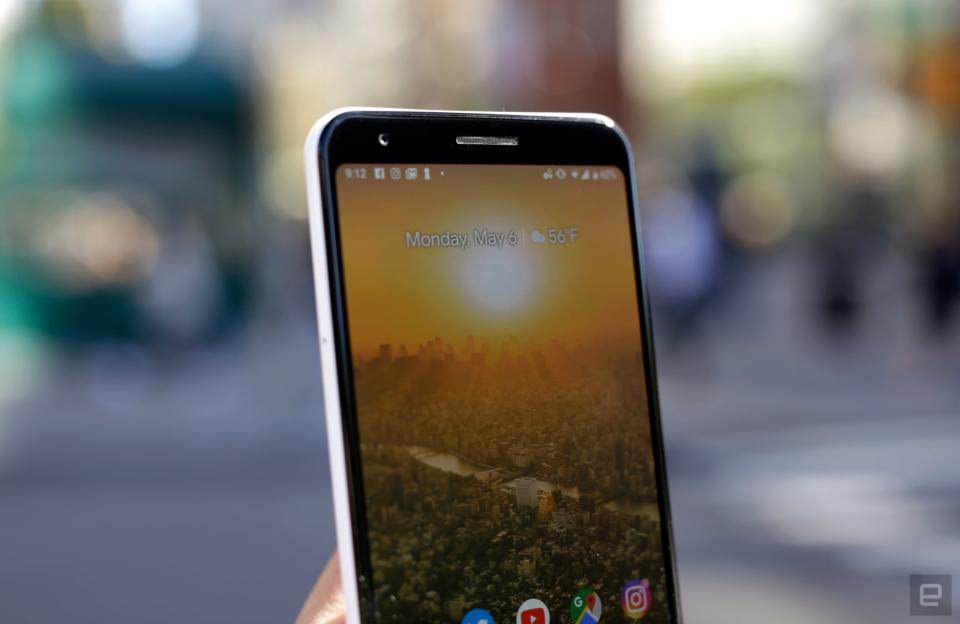
Rather than run with another disconcertingly deep notch, Google went with a more standard 6.0-inch OLED display. That's a little smaller than the nearly edge-to-edge 6.3-inch screen we got on the regular 3 XL, but I'd say the trade-off was well worth it; the 3a XL looks much cleaner as a result, and you get the same amount of screen real estate as you would if you hid the Pixel 3 XL's notch through software. Even the fact that this screen runs at a lower, 2,140 x 1,080 resolution isn't really an issue since it's still plenty crisp with pleasing colors. (It doesn't hurt that the 3a XL is set to the punchy "Adaptive" color mode by default.) That said, I do wish Google had gone with a panel that was just a little brighter; it's mostly readable under direct sunlight, but a little more oomph would have made outdoor use a little easier.
I'm also waiting to see how well the screen holds up over time. Rather than the Corning Gorilla Glass that has become near-standard for flagship phones, the 3a XL instead has a layer of Dragontrail glass protecting the OLED panel. So far, it's managed to fend off the dozens of tiny nicks that come with accidentally putting a phone in the same pocket as my keys, but I suspect my luck won't last much longer. (I am, after all, Engadget's resident butterfingers.) Then again, I somehow managed to put some serious scratches on the standard Pixel 3 XL's screen in a matter of days, so I'm already a little ahead of the game this time around. I'd be lying if I said I wasn't also a little worried about water: The 3a isn't IP-rated for water or dust resistance, which you could probably guess just by looking at the distinct gap between the fingerprint sensor and the rest of the phone's body.
Google deserves credit for making a sub-$500 phone feel nearly as good as a device that originally sold for $900. Here's the thing about the Pixels, though: Everyone knows that Google is, relatively speaking, a rookie hardware-maker. Sleek designs and solid build quality are always appreciated, but they're not what make a Pixel a Pixel. If I had to boil it down, the Pixel experience is defined by only a few crucial factors: the software and the camera experience. Let's look at these one by one.
The Pixel 3a XL runs the same build of Android 9.0 Pie as every other up-to-date Pixel 3, so it'll feel very familiar to some of you. If you've never used a Pixel, well, hello there: You're exactly the kind of person for whom Google made this phone in the first place. As promised, the software here is among the cleanest and most thoughtful implementations of Android you'll find out there. For my money, it's also the easiest flavor of Android to get started with — aside from some atrocious gesture controls, anyway.
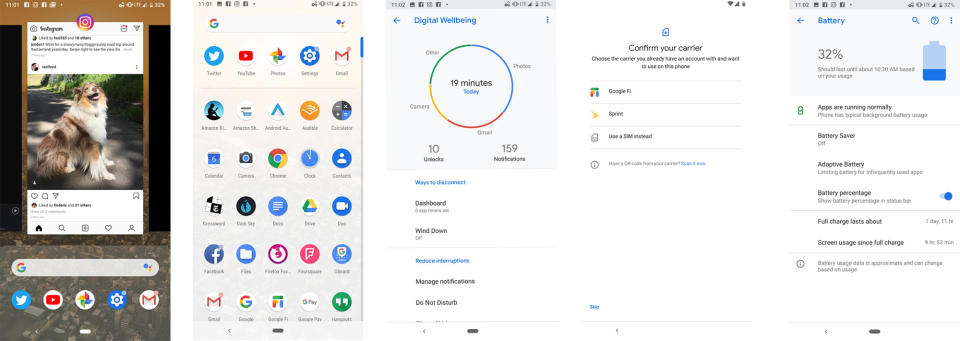
I won't dwell much on the nitty-gritty since we've already reviewed the initial Android Pie release and what it's like to use on the Pixel 3. Still, there are a few features here that are worth reminding people about: Pie's improved Do Not Disturb makes it incredibly easy to shut the world out for a spell, and it ties into a broader focus on what Google calls "Digital Wellbeing." Speaking of well-being, Pie also offers tools to help you understand and better manage the time you spend on your phone — after all, these things are tools, not replacements for a life in the real world. Throw in more nuanced controls for notifications, a handy quick rotation lock button and some under-the-hood AI to make app suggestions and improve battery life, and we're easily looking at Google's most thoughtful set of features yet. Well, until Android Q launches, anyway.
What's more interesting to me is that Google went with some decidedly non-premium silicon when building the 3a. Despite persistent rumors that the 3a and an XL would use different chipsets, they actually both use Qualcomm's Snapdragon 670 with 4GB of RAM. (Considering that the starting price for both of these devices is in the $400 range, 4GB of RAM feels much more appropriate here than in the pricier Pixels.)
If you're just going off the model number, this might sound a little wimpy compared to the Pixel 3's Snapdragon 845. You don't need to worry much, though. While the 3a XL is sometimes noticeably slower than the standard Pixel 3 at launching apps and multitasking, you generally have to be looking for the performance gap to see it. In other words, if you didn't already have a Pixel — or some other flagship phone — you'd find little to complain about here. There's more than enough power to get you through your daily workload, plus plenty of juice for the occasional round of PUBG Mobile running at the highest graphics settings.

So far, I haven't run into any of the troubling memory management issues I had with last year's Pixel 3. Users frequently complained about lag and apps in the background being killed but I didn't struggle with either problem during my week of testing. Then again, that just might be because I knew I was using a phone that cost less than $500 and kept my expectations low. In any case, the 3a XL more than fast enough for most people, and even now, I'm still confused by how few performance issues I ran into. If Google could make a phone that seemed this solid, why did the Pixel 3 turn out the way it did?
Well, it's at least partially because of timing. Because the original 3 and 3 XL launched so soon after Android 9.0 became available, it seems like the Pixel team didn't necessarily have the time to iron out underlying issues before the phones went on sale in October 2018. No wonder the company pushed out so many performance improvement updates after launch. This time, though, Google said it had "the luxury of time" on their side — Android Pie has been out for over a year now, which meant the Pixel team had more experience and a more stable foundation to work with. As someone who very quickly grew disappointed with last year's Pixels, I can honestly say the Pixel 3a XL has been worlds different where stability is concerned.
The pleasant twists don't end there, either. If you're dead-set on owning a Google Pixel and really care about battery life, then you don't have a choice. The 3a XL is the phone you need to buy. There's a 3,700mAh cell inside the phone's plastic frame, up from the relatively paltry 3,430mAh battery found in the original Pixel 3 XL. To be clear, that's still not an amazingly big battery — the Galaxy S10+ has a 4,000mAh cell tucked away inside of it — but it's enough to make the 3a XL the longest-lasting Pixel we've tested. With fairly consistent use, it'll easily stick around for more than a day, and if you're really judicious, you could pretty easily get the phone to hit two days off a single charge. With the original Pixel 3 XL, such a feat seems nearly impossible.
Naturally, screen-on time has improved, too. My original Pixel 3 would report between three and four hours of dedicated screen use right as it died, but the 3a XL routine hits between four and six hours. Google's choice of chipset and screen might not be the most thrilling, but when you combine them with this bigger battery, it's no wonder that the 3a XL can stick around for so much longer without a recharge.
And then there's the camera.
The Pixel 2 and 3 proved that it doesn't really matter what kind of camera a phone has if machine learning can improve the photos after they're taken. Still, going into all of this, I had one big question on my mind: How would the Pixel 3a's camera stack up to the fantastic one we got in the Pixel 3?
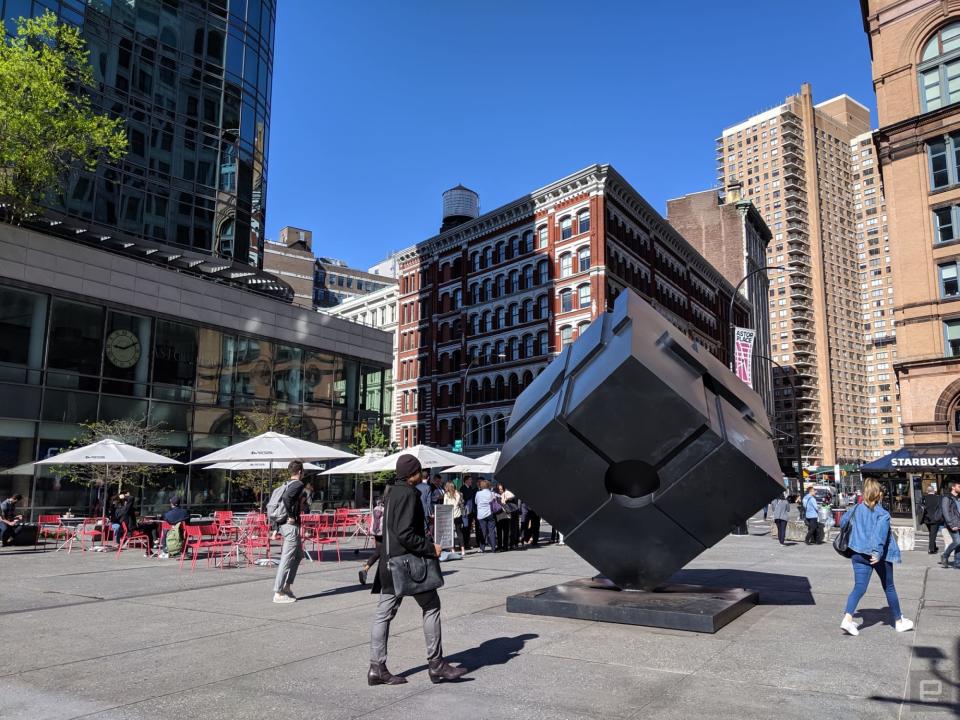
As it turned out, the answer was "very well," because the 3a uses the exact same 12.2-megapixel, Sony IMX363 sensor we liked so much the first time around. The wide, f/1.8 aperture is back. So is the sensor's optical and electronic image stabilization, and its 1.4-micron pixels. All of the Pixel 3's clever photographic tricks are here too, from Top Shot (which quietly captures photos that might be a little better than the one you just took), to Super Res Zoom and Night Sight (which do exactly what their names suggest.) In just about every way that matters, the photos you'll get out of a Pixel 3a are as good as ones captured by much more expensive phones.
With all that said, the camera experience here isn't identical to what Pixel 3 owners might be used to. Google's Pixel Visual Core — that tiny, custom sliver of silicon used to make HDR+ image processing faster — is nowhere to be found here. For what it's worth, a Google spokesperson told me that the Visual Core was left out purely to keep costs down. Even so, the chip's absence was a surprise for two reasons. For one, the Visual Core's inclusion was reported so widely that it already seemed like a done deal. More importantly, I was surprised because the 3a still did a good job improving my images without it; it was so quick, I had originally just assumed it was there.
Upon closer inspection, there is a difference in processing speed. While the original Pixel 3 took around one second to perform its machine-learning magic, it took the 3a XL between four and five. Yes, that's a pretty big difference, but only if you're the type of person who stops to look at their photos before taking new ones. When you're just out there, snapping away, all you'll notice is that images appear to be saved to the camera roll very quickly; the dreaded shutter lag that tarnished the Pixel 3's reputation hasn't been a problem (yet). If you're like me, by the time you start reviewing your shots, the Pixel's processing work has long since been completed.
Just so we're on the same page, aside from minor changes in exposure, photos taken with the 3 XL and 3a XL were basically identical. To me, at least, that's the real promise of the 3a line: Sure, you'll get solid performance and improved battery life, but you'll also get a world-class camera experience on the cheap. There are more flexible options out there, like the Galaxy S10 series and Huawei's P30 Pro, but when it comes to sheer point-and-shoot pleasure, the Pixel 3a is tough to beat.
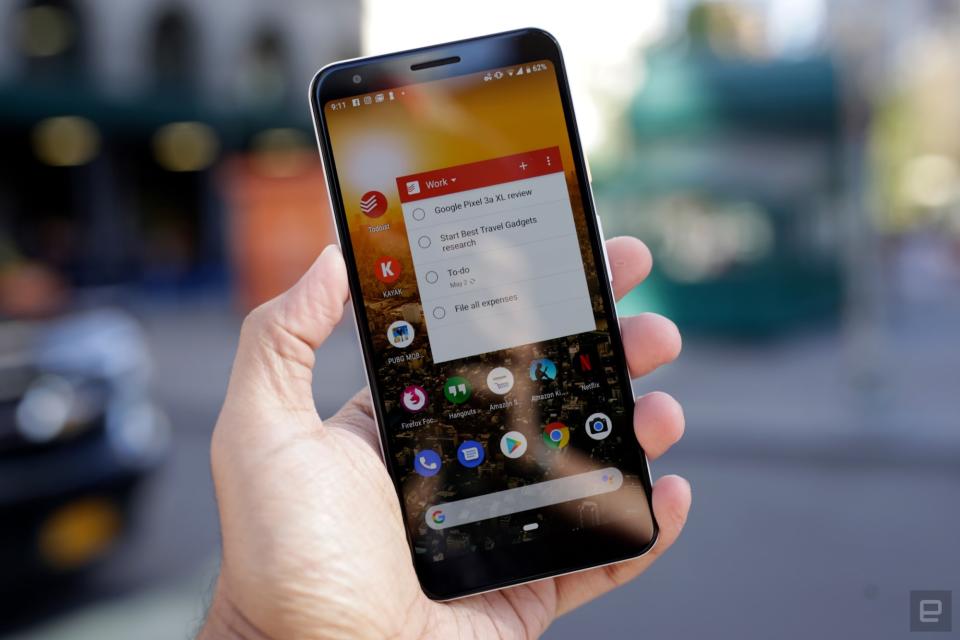
In fact, I'd go as far as to say the Pixel 3a XL is tough to beat in general. Remember, this is a phone that costs under $500 and blends the some of the best of Google's best software with sufficient horsepower and a camera that, while not exactly perfect, is still one of the best on the market right now. Few devices in that price range can compete with that: There's the OnePlus 6T, which packs full 2018 flagship power, and, uh, you got me. That's really the only other one worth owning.
My crystal ball is on the fritz, so I can't predict whether the 3a XL will be the sort of success Google is clearly hoping for. (Regardless, the company says it plans to keep the mid-range a-line going for a while.) What I can say, though, is that anyone who hates the idea of paying too much for a phone simply has to pay attention to this phone. Google took just about everything that made the other Pixels worth owning, fixed a lot of lingering issues, and made the whole thing accessible to even more people. That's definitely worth celebrating.


